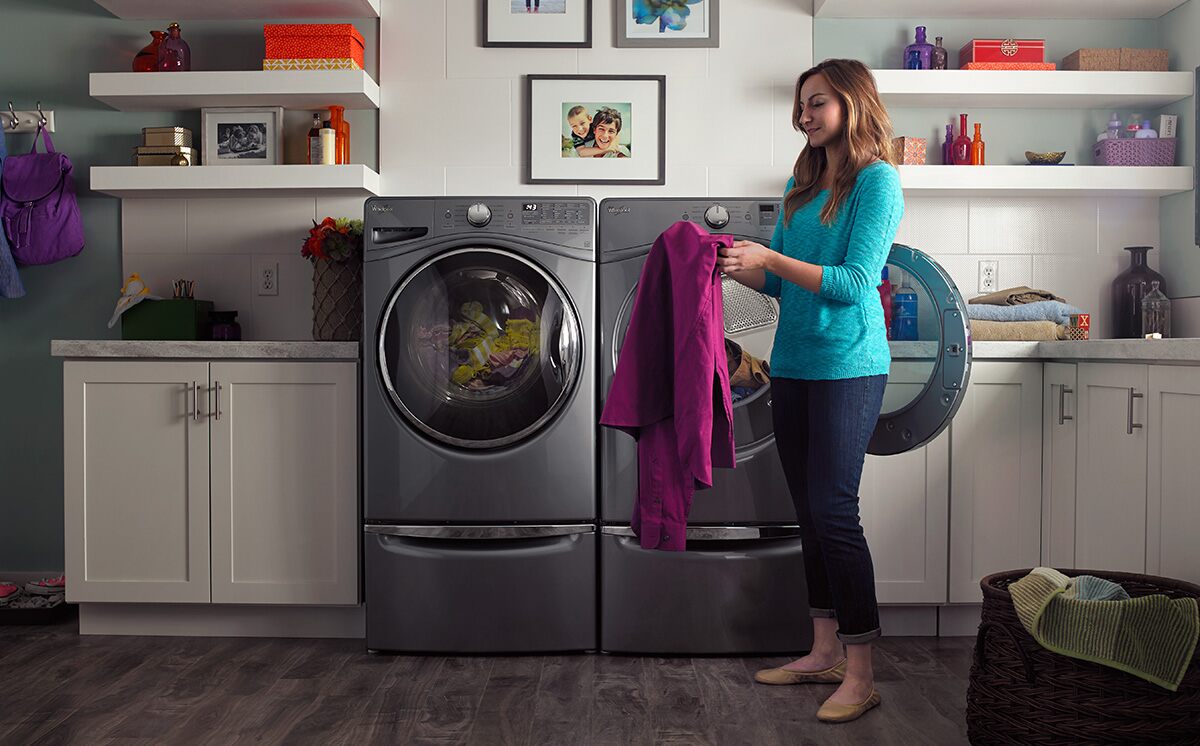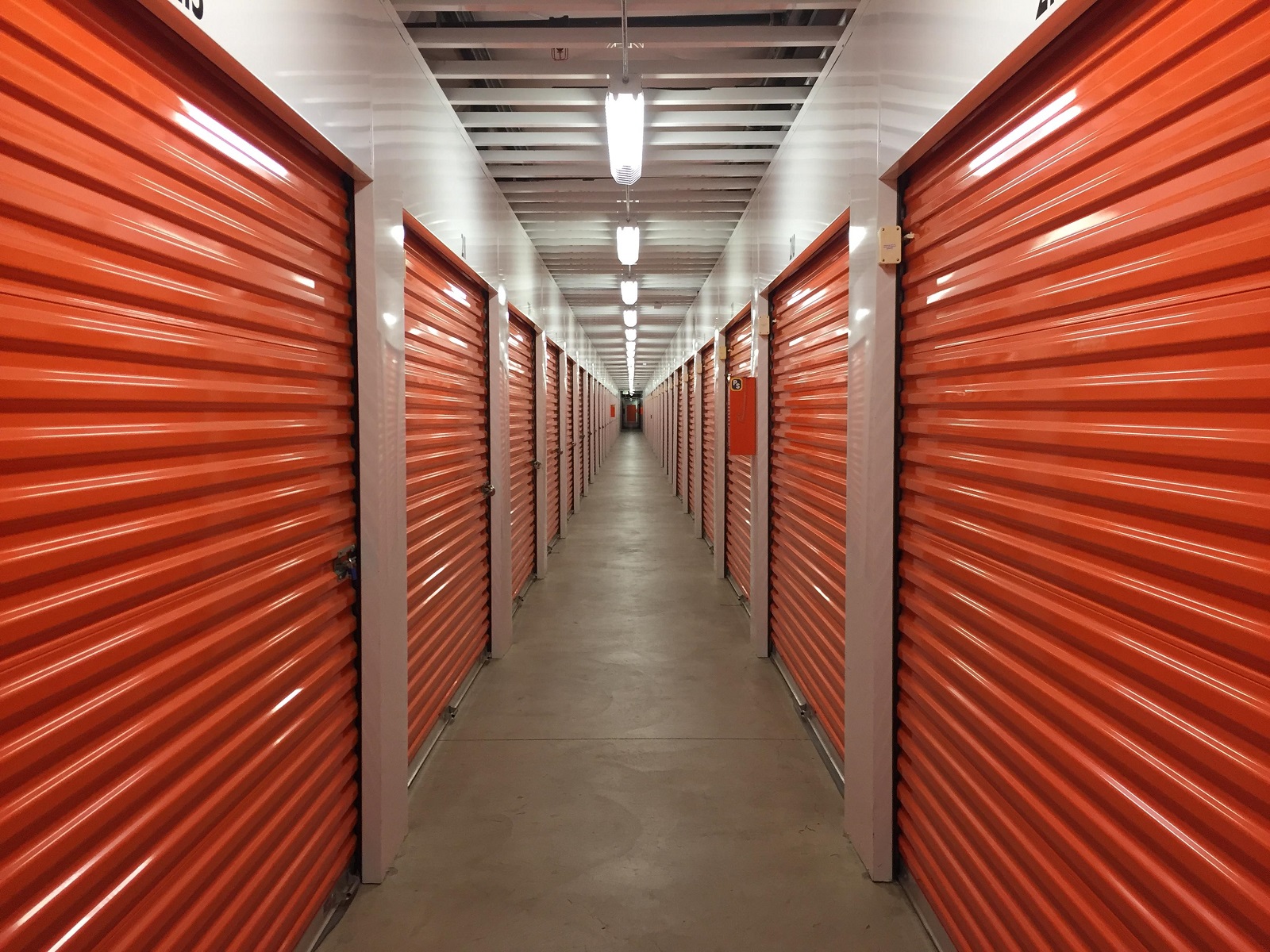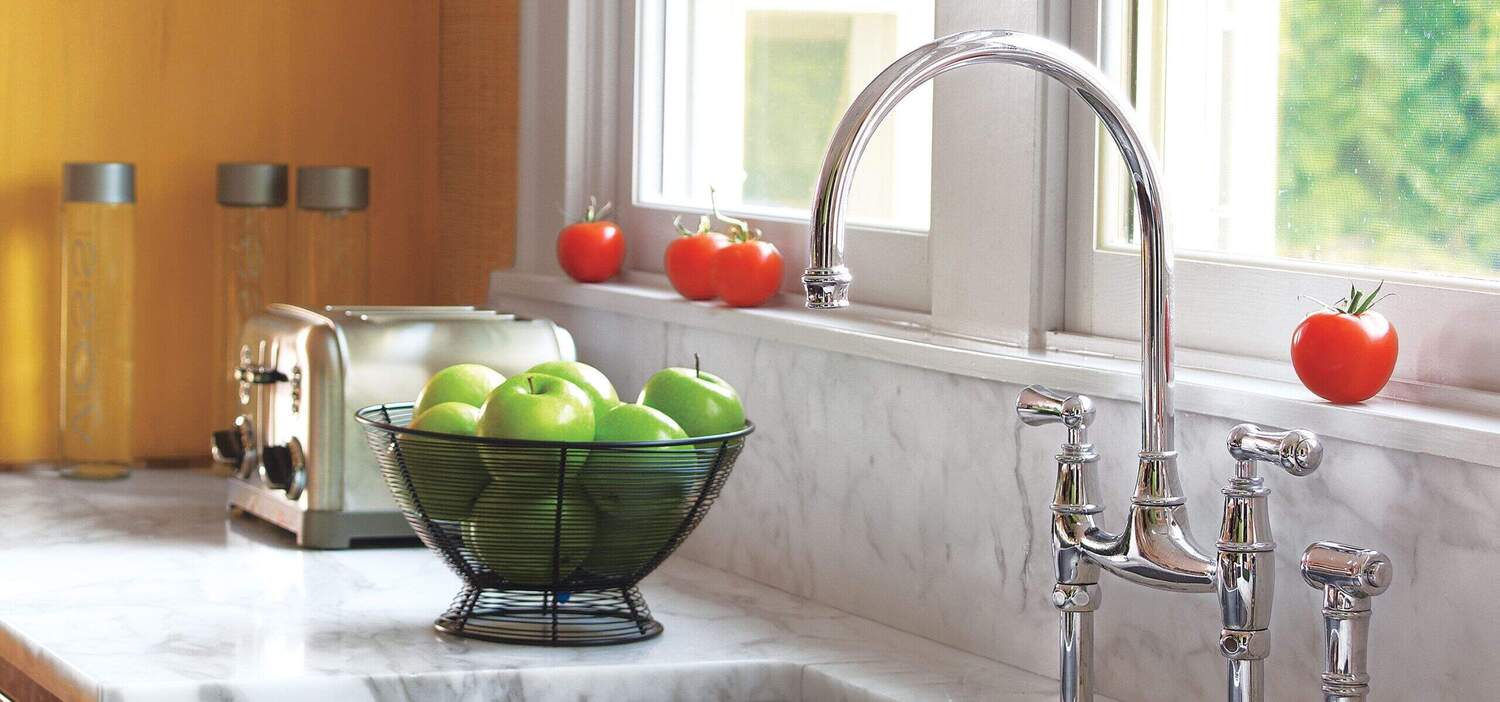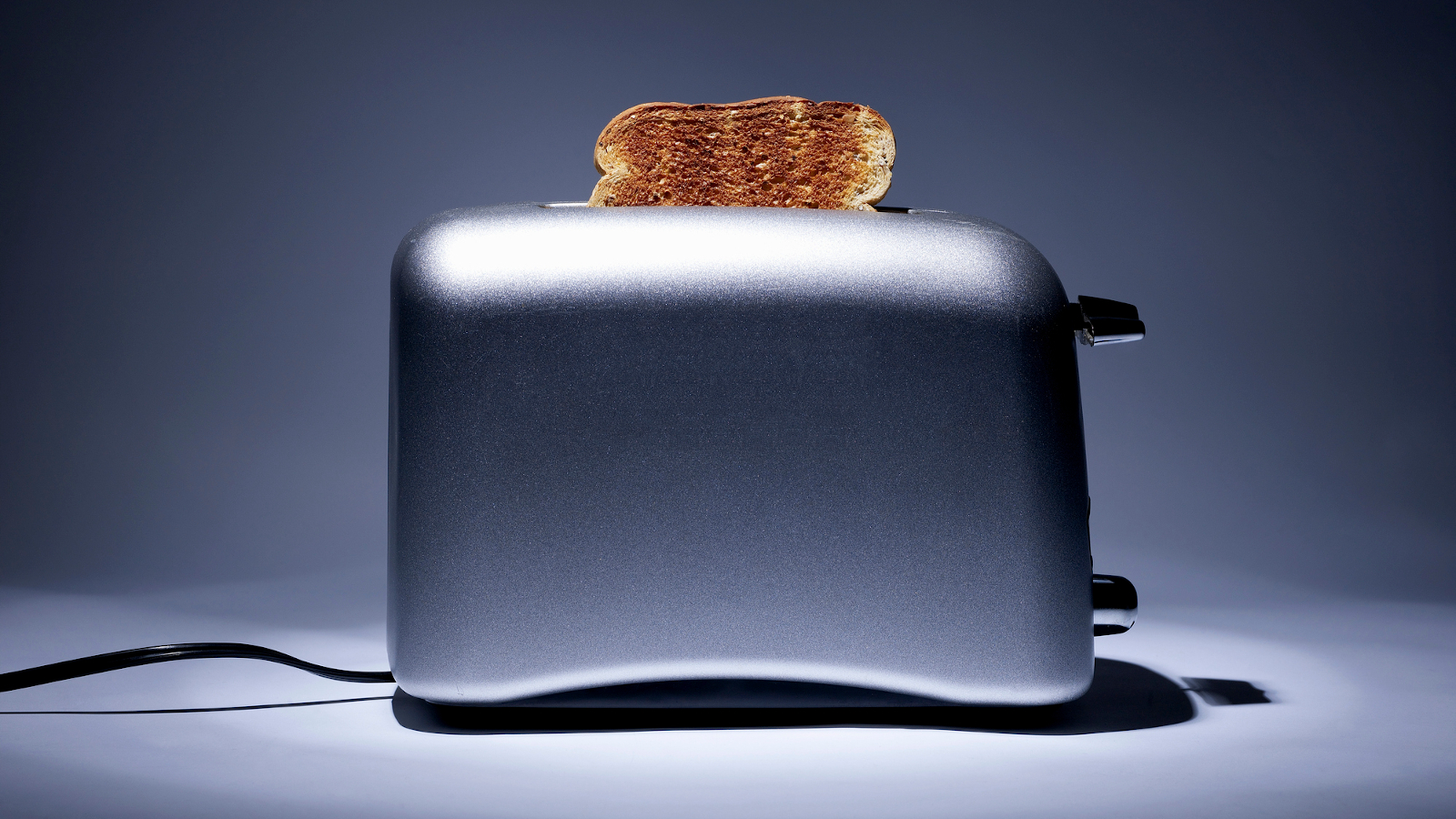

Articles
How Does A Ventless Dryer Work
Modified: January 19, 2024
Learn how ventless dryers work and the benefits they offer. Read informative articles and get expert advice on choosing the best ventless dryer for your needs.
(Many of the links in this article redirect to a specific reviewed product. Your purchase of these products through affiliate links helps to generate commission for Storables.com, at no extra cost. Learn more)
Introduction
Welcome to the modern era of laundry appliances, where convenience and efficiency are key. As technology evolves, so do our household necessities, and one such innovation in the world of laundry is the ventless dryer. In this article, we will explore how ventless dryers work and why they have become a popular choice for many homeowners.
Traditionally, dryers have required an exhaust system, commonly known as a vent, to remove the hot air and moisture generated during the drying process. However, ventless dryers have eliminated the need for an external vent, making them a versatile option for homes without proper ventilation systems or space constraints.
So, how exactly do ventless dryers operate? Let’s dive in and uncover the inner workings of these efficient appliances.
Key Takeaways:
- Ventless dryers, using heat pump or condensation drying, offer energy-efficient and space-saving solutions for homes without external venting. They maintain fabric quality and improve indoor air quality, making them a practical choice for modern living.
- While ventless dryers require longer drying times and regular maintenance, their benefits include versatile installation, energy efficiency, and gentler drying. Consider your specific needs and circumstances to make an informed choice between ventless and vented dryers.
Read also: 11 Incredible Ventless Dryer For 2025
Ventless Dryers: An Overview
Ventless dryers, also known as condenser dryers or heat pump dryers, use advanced technologies to dry your clothes without the need for external ventilation. Instead of expelling the hot air and moisture through a vent, ventless dryers utilize different methods to remove the moisture from the air, making them a great solution for apartments, condos, and other spaces where installing a venting system is not feasible.
There are two primary types of ventless dryers: those that use heat pump technology and those that use condensation drying.
Heat Pump Technology
Heat pump dryers are considered to be one of the most energy-efficient options on the market. They work by circulating hot air through the drum, just like a traditional dryer, but with a twist. The hot air then passes through a heat pump, which extracts the moisture from the air and pushes the dry air back into the drum.
This cycle repeats until the clothes are dry, resulting in significantly less energy consumption compared to conventional vented dryers. Heat pump dryers are known for their excellent drying performance and their ability to retain the clothes’ quality and texture.
Condensation Drying
Condensation drying is another popular method used by ventless dryers. These dryers utilize a condensation chamber to convert the moist air from the drum into water. The condensed water is then collected in a reservoir or drained directly through a plumbing connection.
Condensation dryers use a combination of cool and warm air to extract moisture from the clothes. The warm air absorbs the moisture, while the cool air helps to condense it. This process continues until the clothes are dry, providing an efficient and convenient drying experience.
Some condensation dryers also incorporate the use of a heat exchanger, where the warm air passes through to reheat the incoming cool air before entering the drum. This helps to further optimize energy usage and reduce operating costs.
Now that we have a general understanding of how ventless dryers work, let’s explore some of the specific mechanisms that make them function successfully.
Understanding the Drying Process
To understand how ventless dryers work, it’s important to grasp the basic principles of the drying process. When you load wet clothes into the dryer and turn it on, a series of steps occur to remove the moisture and leave your laundry perfectly dry.
Read more: How Does Steam Dryer Work
1. The Drum
The drum is the heart of any dryer, including ventless dryers. It rotates to tumble the clothes, allowing hot air to circulate through the fabric, speeding up the drying process. The drum’s interior is equipped with fins or baffles that help lift and separate the laundry for more efficient drying.
2. Heating Elements or Heat Pump
Most ventless dryers use a heating element or a heat pump to generate warm air. The heating element produces heat electrically, while the heat pump transfers heat from the air surrounding the dryer.
3. Air Circulation
As the drum rotates, hot air enters through the ventless dryer’s intake, which is usually located at the rear or front of the machine. The heated air is distributed evenly throughout the drum to make contact with the wet clothes.
4. Moisture Removal
Here’s where ventless dryers differ from their vented counterparts. Instead of expelling the moisture-laden air through a vent, ventless dryers adopt one of two methods to remove the moisture from the air: heat pump technology or condensation drying.
Read more: How Does A Clothes Dryer Work
5. Air Filtering
To maintain optimal performance, many ventless dryers incorporate air filtering systems. These filters capture lint, dust, and other particles from the air, preventing them from accumulating inside the machine. Regular cleaning or replacing of these filters is necessary to ensure efficient and safe operation.
6. Cycle Completion
Once the drying process is complete, the ventless dryer usually alerts you through an indicator or audible sound. At this point, you can remove your dry clothes from the drum and proceed with folding or wearing them.
Now that we’ve covered the basics of the drying process in ventless dryers, let’s explore the specific technologies used to achieve efficient drying performance.
Heat Pump Technology
Heat pump technology is a key feature of many ventless dryers and is renowned for its energy efficiency. It works by extracting heat from the surrounding air and transferring it to the drum, resulting in faster and more economical drying.
How Does It Work?
Heat pump dryers consist of a closed-loop system that includes a compressor, a condenser, and an evaporator. The process begins with the evaporator, where the refrigerant absorbs heat from the air. As the air passes through the evaporator, its temperature drops, and the moisture in the air condenses into water.
The low-temperature refrigerant then flows to the compressor, where it is pressurized, causing the temperature to rise. The hot refrigerant then circulates through the condenser, releasing heat into the drum, thus drying the clothes.
Read more: How Does Dyson Hair Dryer Work
Advantages of Heat Pump Technology
- Energy Efficiency: Heat pump dryers are highly energy-efficient, as they reclaim and recycle heat, reducing energy consumption by up to 50% compared to conventional vented dryers.
- Gentle Drying: The lower drying temperatures and careful moisture extraction provided by heat pump technology are gentle on fabrics, ensuring your clothes stay in excellent condition for longer.
- Reduced Wrinkling: The gentle drying process of heat pump dryers reduces the risk of wrinkling, eliminating the need for excessive ironing.
- Versatile Installation: Ventless dryers with heat pump technology can be installed in various locations, regardless of whether there is access to an external vent.
- Improved Indoor Air Quality: Heat pump dryers do not release hot air and moisture into the surrounding environment, resulting in improved indoor air quality and decreased humidity levels.
Considerations for Heat Pump Dryers
While heat pump dryers offer numerous advantages, it’s important to consider a few factors before purchasing one:
- Higher Initial Cost: Heat pump dryers tend to be more expensive upfront compared to traditional vented dryers. However, the long-term energy savings can offset this initial investment.
- Longer Drying Times: The heat pump drying process can take longer than vented drying due to the lower temperatures. However, the energy efficiency and gentler drying make up for the additional time.
- Regular Maintenance: Heat pump dryers require regular cleaning and maintenance to ensure optimal performance. This includes cleaning or replacing filters, checking and clearing condensation drains, and inspecting the heat pump system.
Overall, heat pump technology is a game-changer in the world of laundry appliances, offering energy-efficient and gentle drying capabilities. As the demand for eco-friendly solutions grows, heat pump dryers are becoming increasingly popular options for households worldwide.
Condensation Drying
Condensation drying is another method employed by ventless dryers to efficiently remove moisture from clothes without the need for external venting. This process involves converting the evaporated moisture from wet clothes into water by condensing it.
How Does It Work?
In condensation dryers, the hot air circulating in the drum is cooled down to a temperature below the dew point. As a result, the moisture in the air condenses back into water. The condensed water is then collected in a reservoir or drained out, depending on the dryer’s design.
Some condensation dryers incorporate a heat exchanger to further optimize the efficiency of the drying process. The heat exchanger preheats the incoming cool air by utilizing the warm air that is already inside the dryer. This helps to conserve energy and reduce overall drying time.
Read more: How Does Washer Dryer Combo Work
Advantages of Condensation Drying
- Flexibility of Installation: Condensation dryers do not require a vent, making them suitable for apartments, condominiums, and other settings where venting is not feasible.
- Shorter Drying Time: Condensation dryers often offer faster drying times compared to heat pump dryers, as they typically operate at higher temperatures.
- Reduced Energy Consumption: While not as energy-efficient as heat pump dryers, condensation dryers still consume less energy compared to traditional vented dryers.
- No Moisture Release: Condensation dryers do not release hot air and moisture into the surrounding environment, contributing to improved indoor air quality and reduced humidity levels.
Considerations for Condensation Dryers
Before investing in a condensation dryer, it’s important to consider the following factors:
- Water Disposal: Condensed water needs to be collected in a reservoir or drained out through a plumbing connection. Ensure that you have a suitable method for water disposal depending on the dryer’s design and your setup.
- Higher Operating Temperatures: Condensation dryers tend to operate at higher temperatures compared to heat pump dryers. This may be a factor to consider if you have delicate or heat-sensitive fabrics.
- Regular Maintenance: Like with any dryer, condensation dryers require regular maintenance, including cleaning the condensation chamber and filters to ensure efficient operation.
Overall, condensation drying provides a practical solution for those without access to external venting. With its fast drying times and improved energy efficiency compared to traditional dryers, condensation dryers offer a convenient and effective way to achieve dry and fresh-smelling laundry.
Air Recirculation and Filtering
When it comes to ventless dryers, air recirculation and filtering play an essential role in maintaining efficient and clean drying operations. Let’s explore how these processes contribute to the overall performance of ventless dryers.
Air Recirculation
In ventless dryers, air recirculation refers to the continuous movement of air within the drying system. The purpose of air recirculation is to ensure uniform and consistent heat distribution throughout the drum, enabling efficient and effective drying of the clothes.
The recirculation process typically involves drawing in outside air, heating it, and then circulating it throughout the drum. This heated air absorbs moisture from the clothes and carries it away, aiding in the drying process. The recirculation system also helps maintain a controlled temperature, ensuring optimal drying conditions.
Read more: How To Install A Ventless Fireplace
Air Filtering
High-quality air filtering is crucial in ventless dryers to maintain optimal performance and prevent the buildup of lint and other particles. The filters in ventless dryers trap lint, dust, and other debris present in the air, preventing them from circulating back into the drum or being released into the surrounding environment.
Regular cleaning or replacement of the filters is necessary to ensure proper airflow and prevent clogging. This not only helps maintain drying efficiency but also extends the lifespan of the dryer and prevents potential fire hazards.
In addition to lint filters, some ventless dryers may feature additional filters, such as odor filters, to help remove any unpleasant smells from the drying air. These filters are designed to neutralize odors, ensuring that your clothes come out fresh and odor-free.
The Importance of Air Recirculation and Filtering
Air recirculation and filtering are crucial to the performance and longevity of ventless dryers. Here’s why:
- Efficient Drying: Proper air recirculation ensures the even distribution of heat, resulting in more efficient drying of your clothes.
- Improved Indoor Air Quality: Effective air filtering prevents lint and other particles from being released into the surrounding environment, contributing to better indoor air quality.
- Extended Dryer Lifespan: Regularly cleaning or replacing the filters prevents blockages and reduces wear and tear on the dryer, leading to a longer lifespan.
- Fire Prevention: Lint buildup in the filters can be a fire hazard. By consistently cleaning the filters, you reduce the risk of lint igniting and causing a dryer fire.
By ensuring proper air recirculation and maintaining clean filters, you can optimize the performance and longevity of your ventless dryer, while also enjoying the benefits of efficient drying and improved indoor air quality.
Benefits of Ventless Dryers
Ventless dryers offer a range of benefits that make them an attractive option for many homeowners. Let’s explore the advantages of choosing a ventless dryer for your laundry needs.
1. Versatile Installation
One of the biggest advantages of ventless dryers is their versatility in installation. Traditional vented dryers require an external vent to expel hot air and moisture, limiting their placement options. In contrast, ventless dryers can be installed in various locations, making them suitable for apartments, condos, and other settings where venting is not feasible.
Read more: What Is A Ventless Air Conditioner
2. Space Efficiency
Ventless dryers are typically more compact than vented dryers, making them a great choice for homes with limited space. Their design allows for easier installation in small laundry rooms, closets, or even in kitchen cabinets.
3. Energy Efficiency
Many ventless dryers, particularly those with heat pump technology, are highly energy-efficient. Compared to traditional vented dryers, they consume significantly less energy to dry your clothes. This energy efficiency not only saves you money on your utility bills but also reduces your environmental footprint.
4. Gentle on Fabrics
Ventless dryers, especially those with heat pump technology, operate at lower temperatures, which is gentler on fabrics. This helps to preserve the quality and condition of your clothes, reducing the risk of fading, shrinking, or damage caused by high heat.
5. No Vent Cleaning
With vented dryers, regular cleaning of the external vent and ductwork is essential to prevent lint buildup and maintain efficient operation. Ventless dryers eliminate the need for vent cleaning, saving you time and effort in maintenance.
6. Improved Indoor Air Quality
Unlike vented dryers, which release hot air and moisture into the surrounding environment, ventless dryers retain the moisture and condense it for disposal. This results in improved indoor air quality and reduced humidity levels in your home.
7. Reduced Fire Hazard
Ventless dryers minimize the risk of dryer fires. Lint buildup in the vent or ductwork of a vented dryer can potentially ignite and cause a fire hazard. With ventless dryers, there is no external vent for lint to accumulate, reducing the risk of fire and providing peace of mind.
Considering these benefits, ventless dryers offer a convenient, efficient, and space-saving solution for your laundry needs. Whether you have space limitations, no access to external venting, or simply seek a more energy-efficient option, a ventless dryer may be the perfect fit for your home.
Limitations and Considerations
While ventless dryers have their advantages, it’s important to consider their limitations and specific factors before making a purchasing decision. Here are some key limitations and considerations regarding ventless dryers:
1. Longer Drying Times
Compared to traditional vented dryers, ventless dryers typically have longer drying times, especially with condensation drying. The lower temperatures used during the drying process can extend the drying cycle. However, the energy efficiency and other benefits of ventless dryers often outweigh this slight inconvenience.
Read more: How A Hair Dryer Works
2. Initial Cost
Ventless dryers, especially those with heat pump technology, tend to have a higher upfront cost compared to traditional vented dryers. However, the potential energy savings over time can offset the initial investment. Consider your budget and long-term savings when choosing a ventless dryer.
3. Regular Maintenance
Like any dryer, ventless dryers require regular maintenance to ensure optimal performance. This includes cleaning or replacing the filters, checking and clearing condensation drains, and inspecting the heat pump system (if applicable). It’s essential to follow the manufacturer’s recommendations for maintenance to maximize the lifespan and efficiency of your ventless dryer.
4. Moisture Disposal
For condensation dryers, you need to consider how to dispose of the condensed water. Some ventless dryers have a built-in reservoir that needs to be regularly emptied, while others can be connected to a plumbing drain for automatic water disposal. Determine the most suitable water disposal method for your specific setup and preferences.
5. Heat Sensitivity of Fabrics
While ventless dryers are designed to be gentle on fabrics, it’s essential to consider the heat sensitivity of certain delicate or synthetic materials. Some fabrics may require special care or lower drying temperatures to prevent damage. Always follow the garment care instructions to ensure proper care and avoid any potential issues.
Read more: How Does A Freezer Work
6. Noise Level
Depending on the model and brand, ventless dryers may produce slightly more noise compared to traditional vented dryers. If noise level is a concern for you, consider reading customer reviews or checking the decibel rating of the dryer before purchasing.
By being aware of these limitations and considering the specific factors that apply to your situation, you can make an informed decision about whether a ventless dryer is the right choice for your home and laundry needs.
Comparison with Vented Dryers
When deciding between a ventless dryer and a vented dryer, it’s important to consider the key differences and benefits of each option. Here’s a comparison to help you make an informed choice:
Ventless Dryers
Installation: Ventless dryers offer more flexibility in terms of installation. They can be placed in various locations, even without access to external venting. This makes them suitable for apartments, condos, and other spaces where venting is not feasible.
Energy Efficiency: Ventless dryers, especially those with heat pump technology, are highly energy-efficient. They consume less energy compared to vented dryers, resulting in potential cost savings on your utility bills.
Gentle Drying: Ventless dryers operate at lower temperatures, making them gentler on fabrics. This can help preserve the quality and condition of your clothes, reducing the risk of shrinkage or damage caused by high heat.
Improved Indoor Air Quality: With ventless dryers, hot air and moisture are not expelled into the surrounding environment. This leads to improved indoor air quality and reduced humidity levels inside your home.
Space Efficiency: Ventless dryers are typically more compact, making them an excellent choice for homes with limited space. They can be installed in small laundry rooms, closets, or even in kitchen cabinets.
Vented Dryers
Installation: Vented dryers require a proper external venting system to expel hot air and moisture. This limits their installation options primarily to areas with access to exterior walls or windows.
Drying Time: Vented dryers often have shorter drying times compared to ventless dryers. The hot air is expelled through the vent, resulting in faster drying cycles. This can be beneficial if you have large loads of laundry or need your clothes dried quickly.
Lower Initial Cost: Vented dryers generally have a lower upfront cost compared to ventless dryers. If budget is a significant factor and you have the necessary venting infrastructure in place, a vented dryer may be a more affordable option.
Less Maintenance: Vented dryers typically require less maintenance than ventless dryers. There is no need to clean or replace filters, and there is no condensation system to maintain. Regular cleaning of the vent and lint trap is necessary to prevent lint buildup and ensure efficient operation.
Noise Level: Vented dryers, in general, tend to be quieter during operation compared to ventless dryers. If noise is a concern for you, especially if the dryer is located near living spaces, a vented dryer may be a more appropriate choice.
Ultimately, the choice between a ventless dryer and a vented dryer depends on your specific needs and circumstances. If you have limited space, no access to external venting, or prioritize energy efficiency and gentler drying, a ventless dryer may be the best option for you. However, if you have existing venting infrastructure, require faster drying times, and prefer lower initial costs, a vented dryer could be a suitable choice.
Read more: How Does A Lamp Work
Conclusion
Ventless dryers have revolutionized the way we do laundry, offering a range of benefits and features that make them a popular choice for many homeowners. Whether you’re dealing with space constraints, lack of external venting, or simply desire energy efficiency, ventless dryers provide a practical and convenient solution.
With advanced technologies such as heat pump or condensation drying, ventless dryers efficiently remove moisture from clothes without the need for external ventilation. These technologies not only save energy but also help maintain the quality of your garments by operating at lower temperatures.
By eliminating the need for external venting, ventless dryers offer versatile installation options, allowing you to optimize space utilization and location in your home. This flexibility makes them particularly well-suited for apartments, condominiums, and other settings where venting is not possible.
In addition to their compact design and energy efficiency, ventless dryers contribute to improved indoor air quality by trapping lint and eliminating the release of hot air and moisture into the surrounding environment. This results in a fresher and healthier living space for you and your loved ones.
However, it’s also important to consider the longer drying times and regular maintenance that ventless dryers require. Condensed water disposal, filter cleaning or replacement, and ensuring proper care for heat-sensitive fabrics are essential considerations for optimal performance and longevity.
On the other hand, vented dryers may provide faster drying times and lower initial costs, but they lack the versatility and energy efficiency offered by ventless dryers. Ultimately, the choice between a ventless dryer and a vented dryer depends on your specific needs, available infrastructure, and personal preferences.
In conclusion, ventless dryers offer a range of benefits, including space efficiency, energy savings, gentle drying, and improved indoor air quality. By understanding their operation and considering the specific factors related to your situation, you can confidently choose the right type of dryer that aligns with your lifestyle and laundry needs.
Frequently Asked Questions about How Does A Ventless Dryer Work
Was this page helpful?
At Storables.com, we guarantee accurate and reliable information. Our content, validated by Expert Board Contributors, is crafted following stringent Editorial Policies. We're committed to providing you with well-researched, expert-backed insights for all your informational needs.






0 thoughts on “How Does A Ventless Dryer Work”